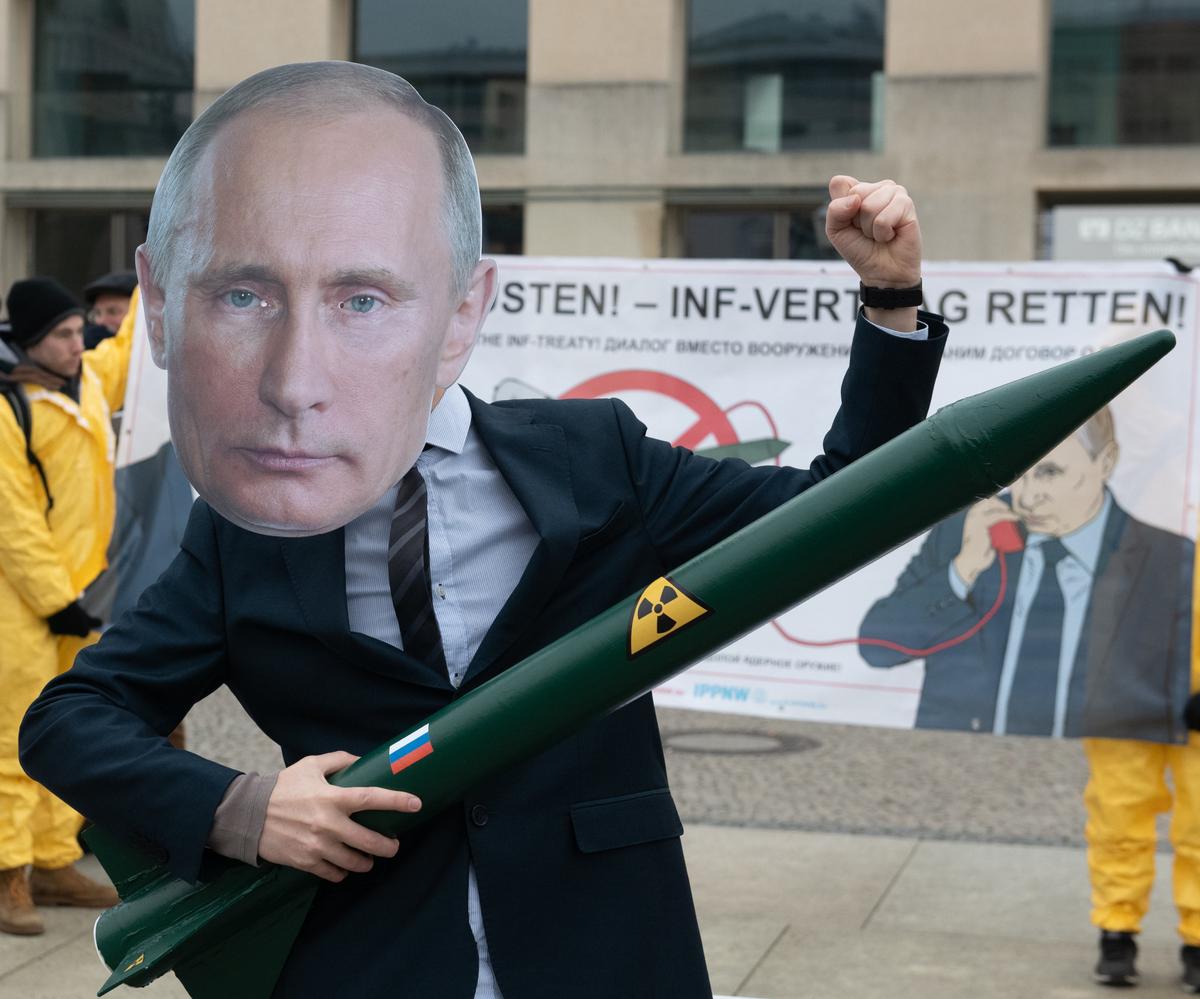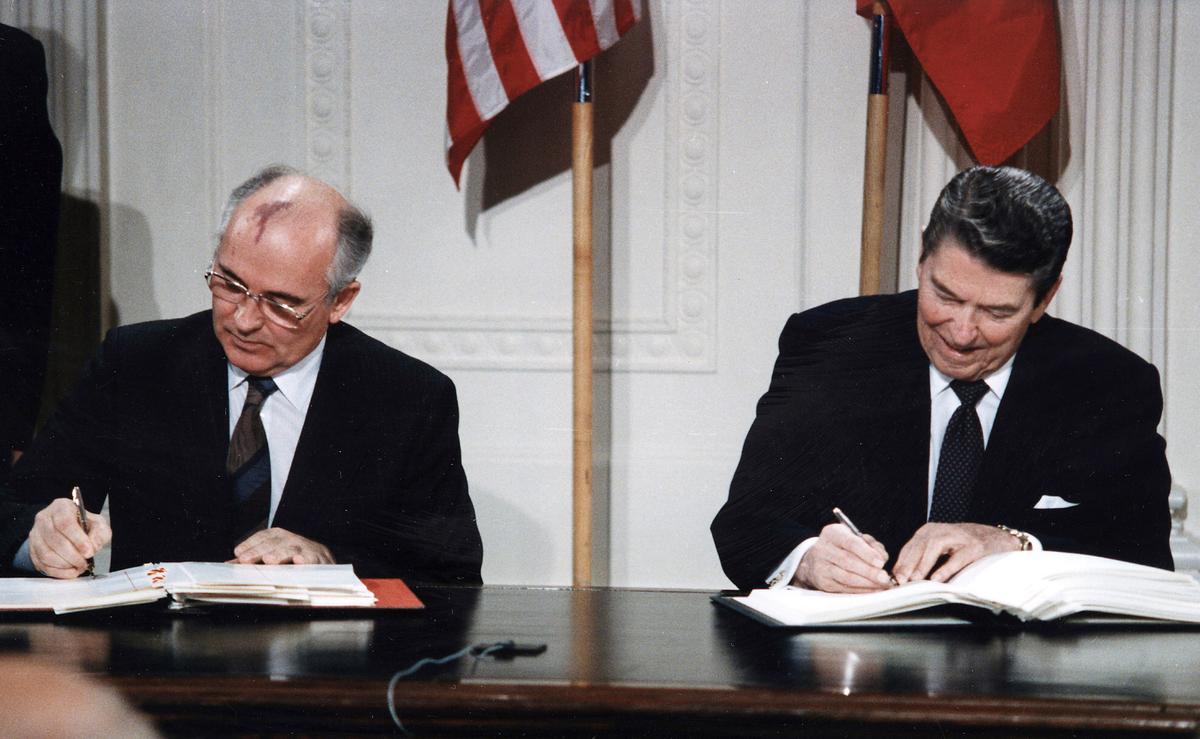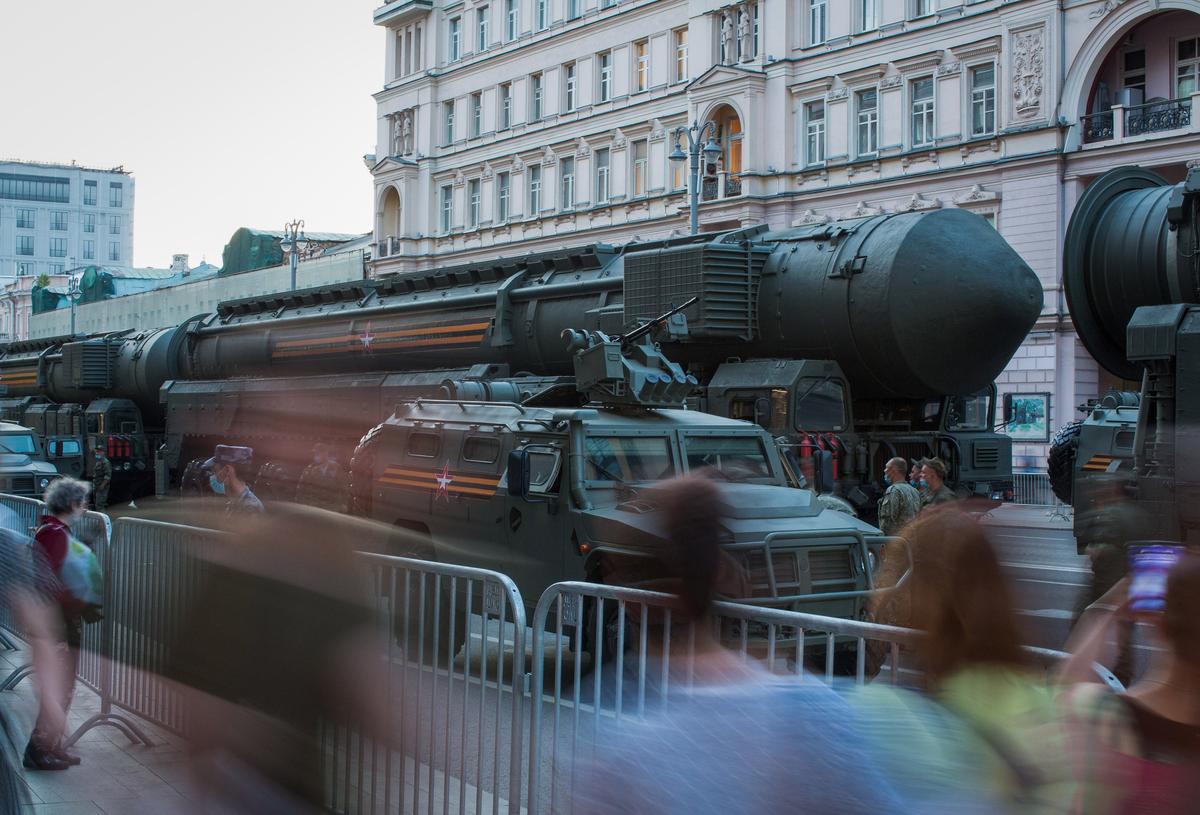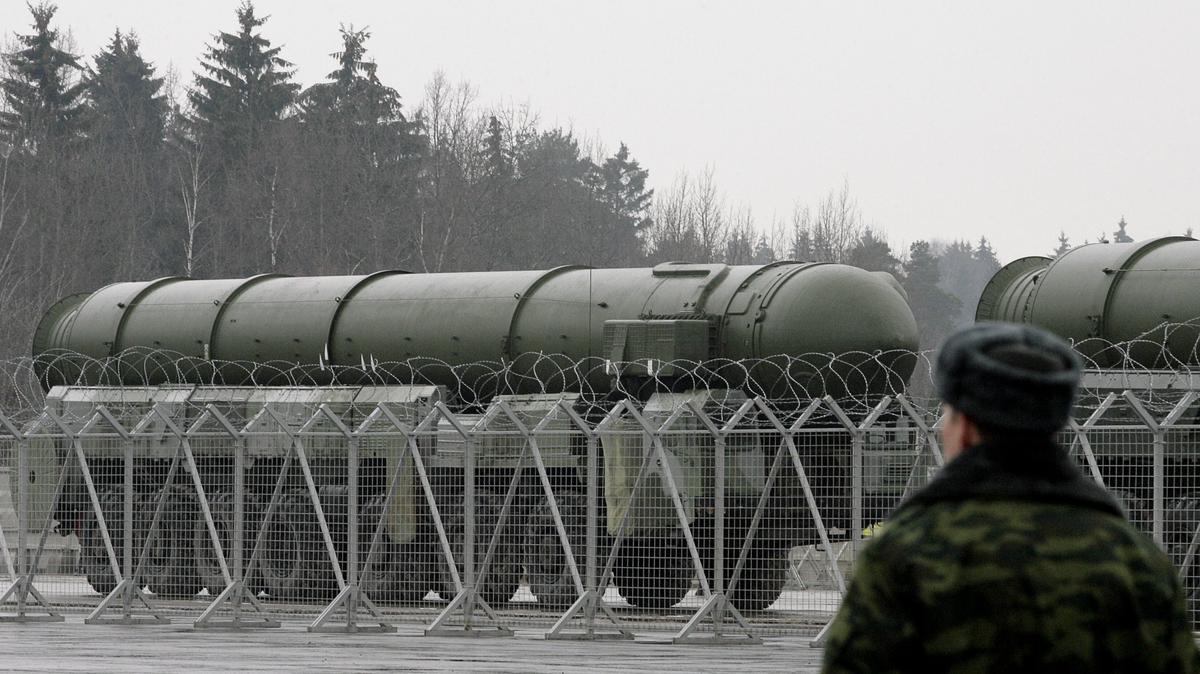At the end of his recent address to the Federal Assembly, Vladimir Putin announced Russia was suspending its participation in the New START nuclear arms reduction treaty with the United States. Should the US or its allies, the UK and France, test nuclear weapons, Russia will do the same, Putin said as he uttered his threat. What will Russia’s suspension of participation lead to — explained by Pavel Luzin, an expert in Russia’s foreign and defence policy and a PhD candidate in political studies.
What potential peril might the New START suspension lead to — both for Russia and its “would-be aggressor”?
There’s no peril, and it’s not the first suspension initiated by Russia. The Treaty on Conventional Armed Forces in Europe has been suspended by Russia since 2007. This has already become a common Russian trick: we do not withdraw from the treaty like bad Americans, but only suspend our participation. So, it isn’t a new thing.
Back in 2019 when the New START extension was being discussed, I mentioned several times that Russia was not very interested in this. Russia was ambivalent about the extension: it would be good for Russia if it was successful, and even better if it wasn’t. The reason is that Russia’s nuclear arsenal is shrinking naturally. Old weapons are being retired faster than new ones are being produced. Russia’s arsenal used to be below the limit in the past years anyway. Thus, the treaty was of no interest to Russia. The treaty implies that inspections be made, but there have been no inspections since 2020.

Rally against exiting the US-Russia INF Treaty, 2019. Photo: Paul Zinken / picture alliance / Getty Images
Putin pretended to be outraged in his address, said that they wanted to inspect sites in Russia.
Well, they played the COVID card and treated the whole thing this way: if this is how things are, let’s stop the inspections, too. Russia was quite content with it. The treaty still exists, but the sides do not abide by it. Well, the part that pertains to data exchange has been executed so far. The sides would exchange information on the number of missiles and warheads, either deployed or not, every six months. They could not check those figures, however, as there were no inspections.
The Trump administration proposed that the sides started multilateral negotiations on nuclear disarmament in 2019. Russia was prepared for the Americans refusing to extend the New START treaty and was content with it ceasing to exist by someone else’s initiative.
But the first thing President Biden did after his inauguration was to extend the treaty.
Yes, the first thing he did was to extend it for five more years. And this was a real challenge for Russia as it was not interested in the treaty. Russia wanted to stop all data exchange. They managed to use COVID as an excuse even in 2021 to prevent the inspections. It was a moronic excuse, but it worked.
COVID was clearly no longer a thing in 2022, but Russia’s excuse to avoid the inspections was updated: they said that the US closed the airspace [for Russia], preventing Russian inspectors from visiting the US.
Pardon me, Russia directly borders the United States via the Bering Strait. But they used any excuse so as not to resume inspections and lasted one more year this way.
It is fair to say that although the treaty was extended, it did not actually function for the past two years. This ultimately led to Russia taking responsibility for suspending the treaty rather than dismantling it completely. And that’s it. Now Russia is trying to switch the agenda to multilateral denuclearisation. Russia says: we aren’t the bad guys; we just want the negotiations to be multilateral.
It’s actually quite logical, given that the US and Russia are not the only two nuclear countries.
Yes, but the difference is that Trump said he wanted China to join the denuclearisation negotiations. What Russia now says is that it wants France and the UK to join, not mentioning China at all. I have been hearing this from the Kremlin for fifteen years now: it’s unfair, they say, that Russia and the US are seeking to reduce arms, while France and the UK, the US allies, do not negotiate. We cannot inspect their arsenals, they say, and we do not include those in the total count while negotiating things with the US, but it’s still there. This has been discussed for ages. I even heard opinions like this: Russia should have a higher limit of deployed warheads as the US has nuclear allies, and we do not. So, in 2023, Putin simply reproduced the rhetoric that has been heard in the Kremlin since the late 2000s.
Why did the treaty pertain to the US and Russia only anyway? Indeed, the US has allies with nuclear arsenals, shouldn’t those be added up to the whole count?
We should recall the history of international relationships here. Who participated in the first negotiations on the matter? It was the US and the Soviet Union. They signed START I and the INF Treaty [on the elimination of intermediate-range and shorter-range missiles]. The two superpowers were negotiating, aiming to reduce tensions. START I worked out its purpose, START II was not ratified eventually, but there was the 2003 Treaty of Moscow on the reduction of nuclear potentials. New START has been valid since 2010. So, it’s just the momentum of the older times.

The US President Reagan and General Secretary Gorbachev sign the INF Treaty, 1988. Photo: Wikimedia
Then the Russian reasoning is even more valid: if you want to add China to the treaty for also having a nuclear arsenal, then we should also add your allies, the UK and France?
If Russia was truly concerned about denuclearisation, it would appeal to Article 6 of the Treaty on the Non-Proliferation of Nuclear Weapons. In this case, Russia would say: let us at least gather the official nuclear countries, namely China, the US, Russia, France, and the UK, and start reducing our nuclear potentials together, simultaneously. However, China has always had this reasoning: guys, you have the largest arsenals, so when you reach our level in reduction, then a multilateral international approach will be possible. France and the UK have roughly the same approach: it is pointless to hold multilateral negotiations while the arsenals of Russia and the United States are disproportionately large.
China, France, and the UK have nowhere to shrink their arsenals as long as Russia and the US each have more nuclear warheads and missiles than all the rest combined.
But Russia demands that the American, French, and British arsenals be counted together because they are in the same military bloc.
It’s a ploy to break the deal and avoid inspections. Russia’s approach is uncooperative, do you get that?
Do I get it right that Russia is suspending the treaty not because it wants to increase its arsenal uncontrollably, but for an exactly opposite reason: it does not want to show to what extent it is being reduced?
Exactly. Russia does not want to show to what extent it is reducing now and will keep reducing next. There is no longer any nuclear parity. Until now, Russia used to share some figures, and the US Department of State had been publishing those, but without detail. It is unknown to what extent those figures matched the reality. Because over the course of these three years, a certain number of missiles and submarines were supposed to be removed from service, and those are formally included in the figures, but cannot be actually used. And we do not know how many bombers can no longer fly anywhere, because, for example, the Ukrainians have destroyed some of them in Engels. So, Russia is suspending its participation in the treaty so that there are no inspections and so that no data is longer provided and so that no one can check how many missiles, submarines and bombers Russia actually has.
Is this because Russia does not need parity with the United States, but rather needs nuclear weapons for blackmail?
Certainly, yes. That is why Russia is holding on to the parity thing, claiming it is the only country that can destroy the United States. In reality, the imbalance will only grow, and Russia will continue confusing the issue and showing some cartoons with missiles that simply do not exist.
May Russia be using the treaty suspension to actually increase its nuclear potential?
Russia cannot scale up armaments, it has no industrial capacity to do so. Russia will only retire old submarines and old intercontinental missiles at least until the end of the 2020s. Once they all become retired, there will be some stabilisation, and only then some increase is possible since some Yars missiles will last longer than Topols, the previous generation missiles. So, after the stabilisation, a rise may begin from the bottom to which Russia will sink. Well, when I say bottom, I still mean hundreds of deployed missiles and warheads. But Russia will only be able to decrease its potential up to the end of the 2020s.

RS-24 Yars strategic nuclear missile. Photo: Andrey Rudakov / Bloomberg / Getty Images
Please explain this to people not familiar with the topic: what does “to go out of service” mean when we talk about missiles? Those aren’t groceries to get spoiled after all, those are just kept somewhere...
Those aren’t kept. If we talk about solid-fuelled missiles, they use blaster [a.k.a. shattering] powder and have best before dates. There are chemical reactions going on inside that eventually put those out of use. Missiles that use liquid fuel can only be stored without it. Once you put the fuel inside the missile, corrosion starts kicking in. This renders electronics inoperable, damages capacitors, and the gyros inside cannot last an eternity after all.
But someone’s always near those missiles to keep them battle-ready, right?
Yes, there is someone, but there are no miracles. You may extend the life duration of a R-36M missile as long as you want, but this doesn’t mean it will lift off when you need it to. Russia has 46 of those in service on paper, but in reality, there may be zero. The reason is that these missiles have not even been tested for several years, and test firings, used to extend the life duration of missiles, have not been executed. Nobody is actually certain that the missile will lift off at all.
The same thing pertains to UR-100NUTTKh missiles: 30 of them used to be stored with no fuel, some are used with Avangard vehicles now, but no firings were executed recently.
So how does the extension of life duration you spoke about happen?
It happens on paper only. Nobody knows how and where those missiles might fly to.
Does Russia’s potential adversary have any ways to realistically evaluate its nuclear potential other than inspections? I mean, satellites, intel, that sort of thing?
No. There is no method more reliable than inspections. Satellites or some agents, which are generally rare, may only provide grounds for assessments. And only an inspector can find out how things really are: a living person who arrives at the place, sees the item, and touches it with his hands. This is the most reliable way of mutually controlling each other’s arsenals. All other ways are but palliative ones. Satellites is a good thing, the Americans have more of them, and those are better ones, so they can control something. Russia has no satellites of this kind. But those are secondary ways, the whole thing does not work without the inspections.
The data on how many nuclear warheads each side has is publicly available, both sides have four-digit numbers of warheads, over two thousand.
The START treaty says 1,550, and those are deployed, i.e., battle-ready, strategic warheads. The rest is non-deployed strategic warheads, often waiting to be disassembled, and non-strategic nuclear weapons, some of which are also waiting to be disassembled but not covered by any treaties.
There is an often-repeated assertion: each of the sides has enough nuclear weapons to destroy the Earth several times. What difference does it make whether Russia actually has 2,000, or 1,500, or “only” 1,000 warheads?
The rhetoric about “destroying the Earth” was relevant in the 1980s when each side had almost 20,000 warheads. The current amount is totally different and goes on about a guaranteed mutual destruction. Mutual is the key word here. This means that in the event of a strike on nuclear facilities by one of the parties, it will have enough missiles left to inflict unacceptable damage on the enemy. And these missiles will definitely lift off, fly, and cause damage.
All these calculations and terminology, debates on how many times we may hurt each other, is that what is required to deter each other? For nuclear blackmail?
Deterrence and blackmail are not the same, after all. Deterrence is the ability to force the opponent to give up his intentions to destroy you, because it knows that in return it will definitely get hit too and receive unacceptable damage, and that it will not be able to destroy your entire arsenal with a disarming strike. Deterrence is a mutual process in military and political relations. But blackmail is what Russia is doing now. Putin threatened to resume nuclear testing.
Yes, as a response for potential, as he suspects, tests in the US.
This is blackmail. And deterrence is the opponent’s confidence that you have enough deployed missiles.
How can the suspension of Russia’s participation in New START treaty affect the mutual deterrence process?
It will simply have no effect. This won’t change math laws. Russia’s arsenal will keep shrinking regardless. Effectively, Russia does not need an arsenal as big as the one it has now; it is enough to have 80 to 100 intercontinental missiles to deter the United States. No one would push the luck by trying to disarm Russia with a nuclear strike. Russia only holds on to the idea of parity with the US, and this idea is now creaking at the seams. This is why Russia closes its arsenal from inspections and any exchange of data: to imitate the parity. And that’s it.
Does the US, a potential adversary, understand what it is dealing with? Do they understand why Russia actually doesn’t want inspections?
Of course, they do.
But since there are no inspections, they are deprived of the opportunity to operate with this understanding?
They understand that they will have to return to assessing Russia’s arsenal, instead of exactly knowing its condition. Well, they will assess then.
Can this push the sides to a new arms race?
Russia is incapable of conducting an arms race now.
The Soviet Union was also not very capable, as it turned out later, but joined the arms race with enthusiasm, making a fatal mistake.
The difference is that the Soviet Union actually produced thousands of missiles and warheads. Russia is currently not capable of doing this, its industry won’t even compensate for the old missiles that they keep retiring.
Join us in rebuilding Novaya Gazeta Europe
The Russian government has banned independent media. We were forced to leave our country in order to keep doing our job, telling our readers about what is going on Russia, Ukraine and Europe.
We will continue fighting against warfare and dictatorship. We believe that freedom of speech is the most efficient antidote against tyranny. Support us financially to help us fight for peace and freedom.
By clicking the Support button, you agree to the processing of your personal data.
To cancel a regular donation, please write to [email protected]

